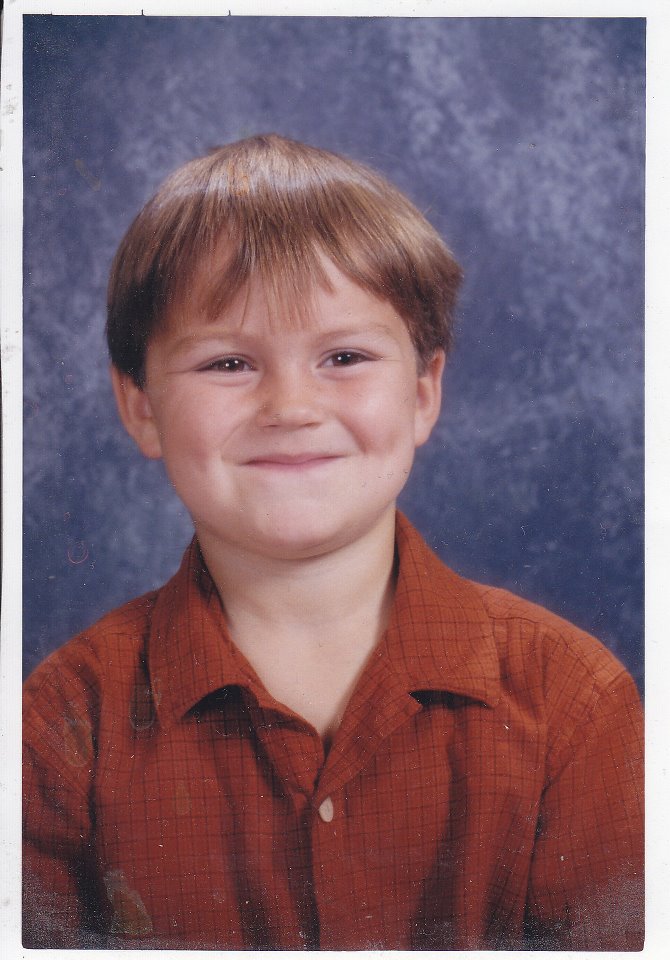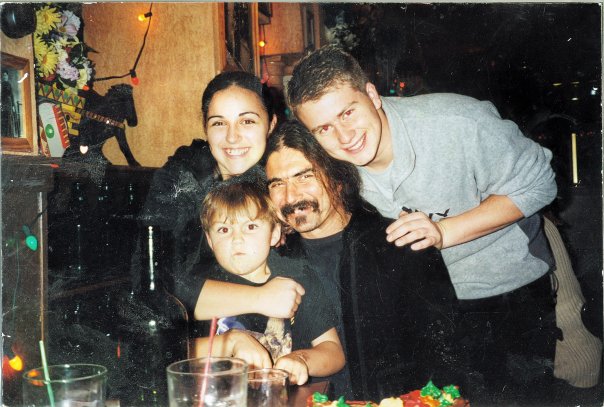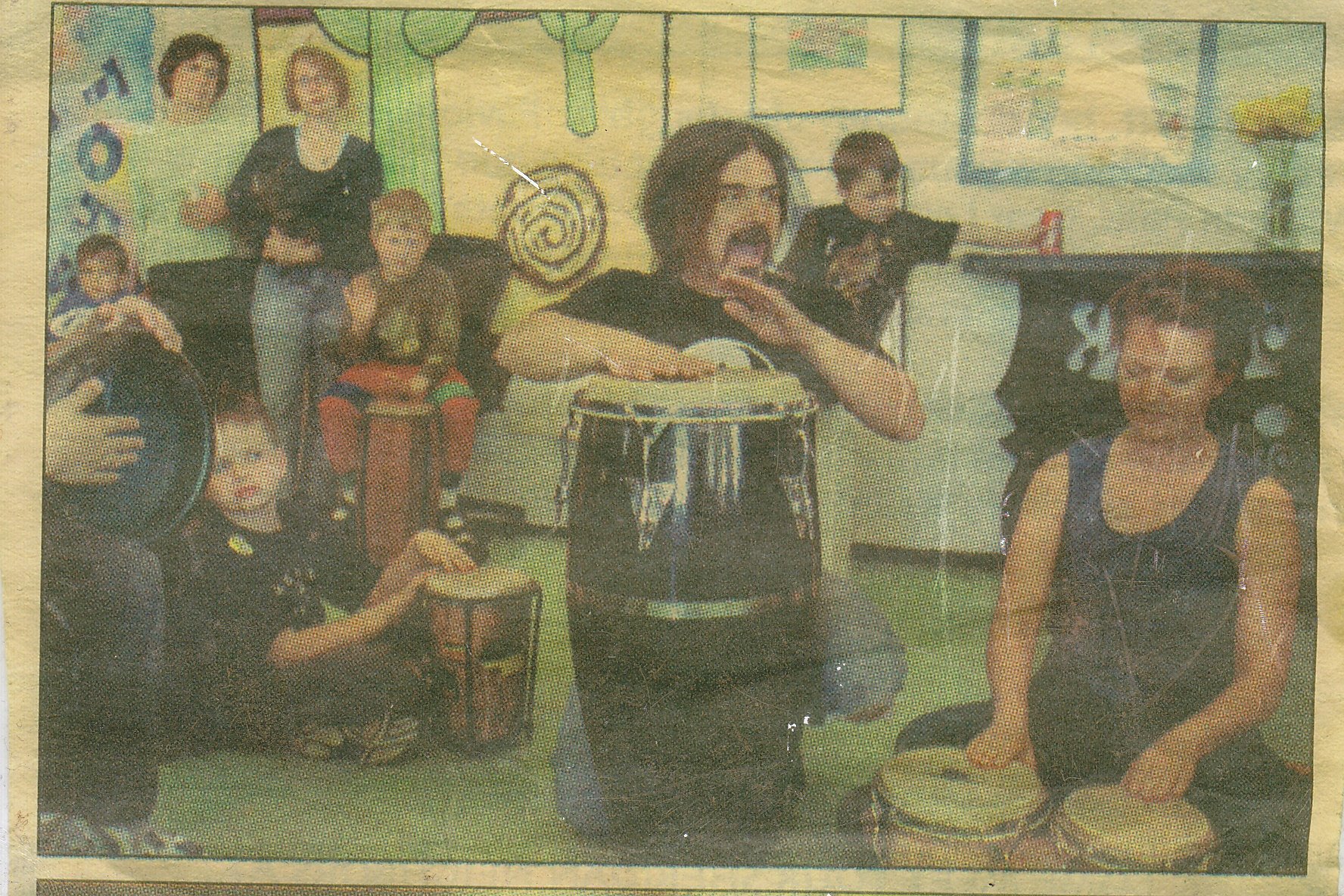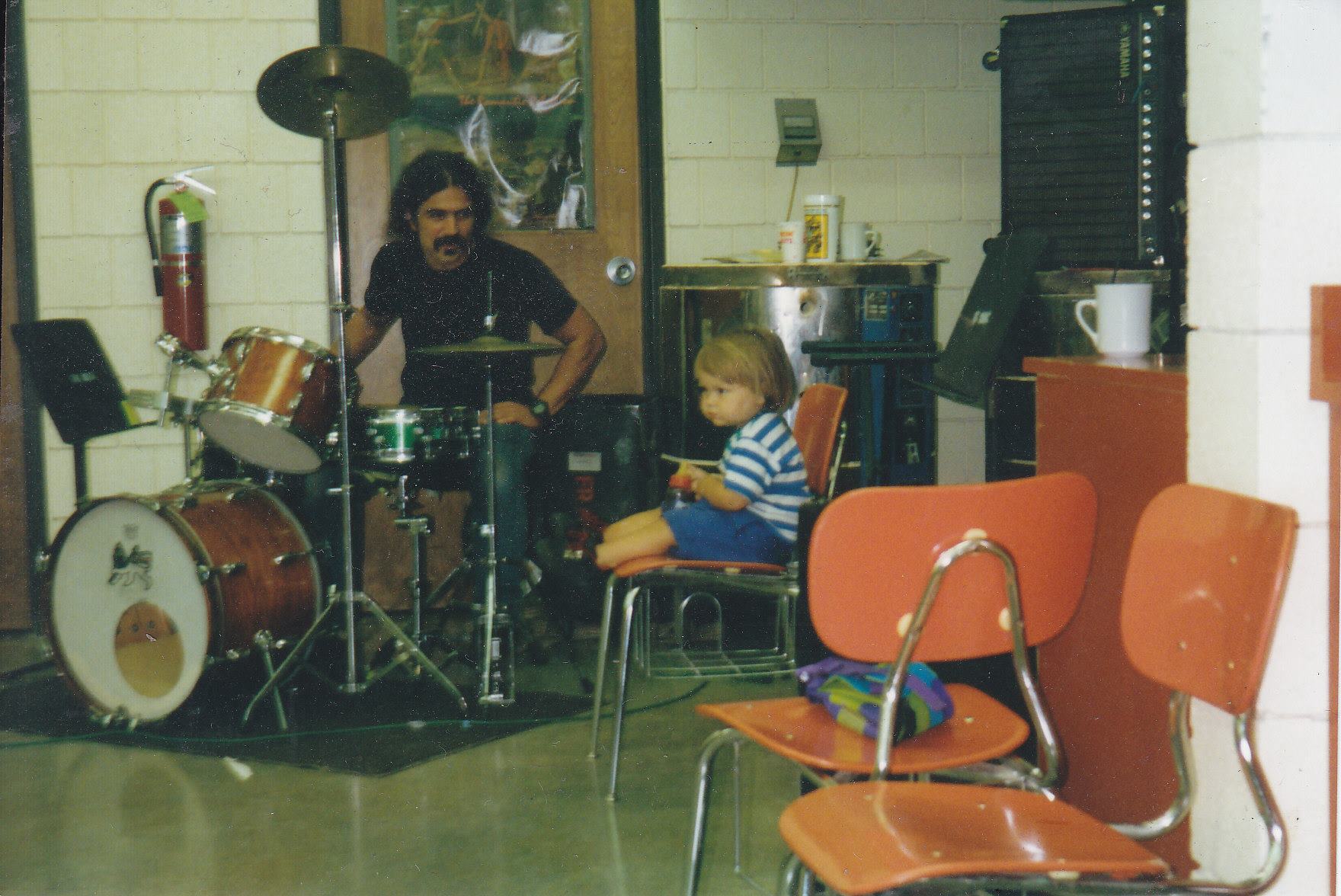Blog
Three prominent dust lanes that give the Trifid its name all come together. Mountains of opaque dust appear near the bottom, while other dark filaments of dust are visible threaded throughout the nebula. A single massive star visible near the center causes much of the Trifid’s glow. The Trifid, cataloged as M20, is only about 300,000 years old, making it among the youngest emission nebulas known. The star forming nebula lies about 9,000 light years away toward the constellation of the Archer (Sagittarius). The region pictured here spans about 20 light years.

Paul Norris Bollenback (born June 6, 1959) is a jazz guitarist who has appeared on Entertainment Tonight, The Tonight Show, The Today Show, Joan Rivers, and Good Morning America. He has performed with Scott Ambush, Charlie Byrd, Joey DeFrancesco, Herb Ellis, Della Reese, Arturo Sandoval, and Stanley Turrentine. He is cited as a guitarist who uses modern quartal harmony.
Bollenback moved to India with his family when he was 11. After three years, the family returned to the U.S. and Bollenback began listening to rock music. He put down his nylon-string guitar and picked up an electric. He cites his discovery of Miles Davis as a pivotal moment in his life. He attended the University of Miami. In 1997, he began teaching at American University.
more...James Melvin Lunceford (June 6, 1902 – July 12, 1947) was an American jazz alto saxophonist and bandleader in the swing era. Lunceford was born on a farm in the Evergreen community, west of the Tombigbee River, near Fulton, Mississippi, United States. The 53-acre (21 ha) farm was owned by his father, James. His mother was Idella (“Ida”) Shumpert of Oklahoma City, an organist of “more than average ability”. Seven months after James Melvin was born, the family moved to Oklahoma City.
The family next moved to Denver where Lunceford attended high school and studied music under Wilberforce J. Whiteman, father of Paul Whiteman, whose band was soon to acquire a national reputation. As a child in Denver, he learned several instruments. After high school, Lunceford continued his studies at Fisk University. In 1922, he played alto saxophone in a local band led by the violinist George Morrison which included Andy Kirk, another musician destined for fame as a bandleader.
After playing McElroy’s Ballroom in Portland, Lunceford and his orchestra were in Seaside, Oregon, to play at The Bungalow dance hall on July 12, 1947. Before the performance Lunceford collapsed during an autograph session at a local record store. He died while being taken by ambulance to the Seaside hospital. Lunceford was 45. Dr Alton Alderman performed an autopsy in nearby Astoria, Oregon, and concluded that Lunceford died of coronary occlusion.
more...Montgomery Bernard “Monty” Alexander OJ (born 6 June 1944) is a Jamaican jazz pianist. His playing has a Caribbean influence and bright swinging feeling, with a strong vocabulary of bebop jazz and blues rooted melodies. He was influenced by Louis Armstrong, Duke Ellington, Erroll Garner, Nat King Cole, Oscar Peterson, Ahmad Jamal, Les McCann, and Frank Sinatra. Alexander also sings and plays the melodica. He is known for his surprising musical twists, bright rhythmic sense, and intense dramatic musical climaxes. Monty’s recording career has covered many of the well-known American songbook standards, jazz standards, pop hits, and Jamaican songs from his original homeland. Alexander has resided in New York City for many years and performs frequently throughout the world at jazz festivals and clubs.
Alexander was born on 6 June 1944 in Kingston, Jamaica. He discovered the piano when he was four years old and seemed to have a knack for picking melodies out by ear. His mother sent him to classical music lessons at the age of six and he became interested in jazz piano at the age of 14. He began playing in clubs, and on recording sessions by Clue J & His Blues Blasters, subbing for Aubrey Adams, whom he describes as his hero, when he was unable to play. Two years later, he directed a dance orchestra (Monty and the Cyclones) and played in the local clubs covering much of the 1960s early rock and pop dance hits. Performances at the Carib Theater in Jamaica by Louis Armstrong and Nat King Cole left a strong impression on the young pianist.
more...Grant Green (June 6, 1935 – January 31, 1979) was an American jazz guitarist and composer.
Recording prolifically for Blue Note Records as both leader and sideman, Green performed in the hard bop, soul jazz, bebop, and Latin-tinged idioms throughout his career. Critics Michael Erlewine and Ron Wynnwrite, “A severely underrated player during his lifetime, Grant Green is one of the great unsung heroes of jazz guitar … Green’s playing is immediately recognizable – perhaps more than any other guitarist.” Critic Dave Hunter described his sound as “lithe, loose, slightly bluesy and righteously groovy”. He often performed in an organ trio, a small group featuring a Hammond organ and drummer.
Apart from fellow guitarist Charlie Christian, Green’s primary influences were saxophonists, particularly Charlie Parker, and his approach was therefore almost exclusively linear rather than chordal. He thus rarely played rhythm guitar except as a sideman on albums led by other musicians. The simplicity and immediacy of Green’s playing, which tended to avoid chromaticism, derived from his early work playing rhythm and bluesand, although he achieved a synthesis of this style with bop, he was a highly skilled blues and funk guitarist and returned to this style in his later career.
Grant Green was born on June 6, 1935 in St. Louis, Missouri to John and Martha Green. His father was at various times a laborer and a Saint Louis policeman. While in New York to play an engagement at George Benson‘s Breezin’ Lounge, he collapsed in his car of a heart attack and died on January 31, 1979.
more...





The jellyfish galaxy JO206 trails across this image from the NASA/ESA Hubble Space Telescope, showcasing a colourful star-forming disc surrounded by a pale, luminous cloud of dust. A handful of bright stars with criss-cross diffraction spikes stand out against an inky black backdrop at the bottom of the image. JO206 lies over 700 million light-years from Earth in the constellation Aquarius, and this image of the galaxy is the sixth and final instalment in a series of observations of jellyfish galaxies. Some of Hubble’s other observations of these peculiar galaxies — which range from grandiose to ghostly — are available here. Jellyfish galaxies are so-called because of their resemblance to their aquatic namesakes. In this image, the disc of JO206 is trailed by long tendrils of bright star formation that stretch towards the bottom right of this image, just as jellyfish trail tentacles behind them. The tendrils of jellyfish galaxies are formed by the interaction between galaxies and the intra-cluster medium, a tenuous superheated plasma that pervades galaxy clusters. As galaxies move through galaxy clusters they ram into the intracluster medium, which strips gas from the galaxies and draws it into the long tendrils of star formation. The tentacles of jellyfish galaxies give astronomers a unique opportunity to study star formation under extreme conditions, far from the influence of the main disc of the galaxy. Surprisingly, Hubble revealed that there are no striking differences between star formation in the discs of jellyfish galaxies and star formation in their tentacles, which suggests the environment of newly-formed stars has only a minor influence on their formation. [Image Description: A spiral galaxy that is tilted partially toward us. Its inner disc is bright and colourful, with bluish and reddish spots of star formation throughout the arms. An outer disc of pale, dim dust surrounds it. It has many arms, which are being pulled away from the disc

Peter Erskine (born June 5, 1954) is an American jazz drummer who was a member of the jazz fusiongroups Weather Report and Steps Ahead. Erskine was born in Somers Point, New Jersey, U.S. He began playing the drums at the age of four. He graduated from the Interlochen Arts Academy in Michigan, then studied percussion at Indiana University.
His professional music career started in 1972 when he joined the Stan Kenton Orchestra. After four years with Kenton, he joined Maynard Ferguson for two years. In 1978, he joined Weather Report, joining Jaco Pastorius in the rhythm section. After four years and five albums with Weather Report and the Jaco Pastorius big band’s Word of Mouth, he joined Steps Ahead.
In 1983, he performed on the Antilles Records release Swingrass ’83. He toured the US in 1992 with Chick Corea.
more...Jerry González (June 5, 1949 – October 1, 2018) was an American bandleader, trumpeter and percussionist of Puerto Rican descent. Geraldo, his father, was a singer in a band and worked for Las Villas, a chain of stores selling Latin American products. Jerry, who liked the trumpet and studied it carefully, but also the congas was a member of Cal Tjader Callen Radcliffe Tjader Jr. an American Jazz musician, known as the most successful non-Latino of Latin Jazz. Together Jerry Gonzalez with his brother, bassist Andy González, played an important role in the development of Latin Jazz during the late 20th century. During the 1970s, both played alongside Eddie Palmieri and in Manny Oquendo‘s Conjunto Libre, and from 1980 to 2018 they directed The Fort Apache Band. From 2000 to 2018, Jerry González resided in Madrid, where he fronted Los Piratas del Flamenco and El Comando de la Clave. In October 2018, he died of a heart attack after a fire in his home in Madrid.
Jerry González was born in 1949 in Manhattan, on 158th Street and 3rd Avenue, and moved to the Edenwald Houses in the Eastchester section of the Bronx at the age of 4.
more...
Laura Phillips “Laurie” Anderson (born June 5, 1947) is an American avant-garde artist, composer, musician, and film director whose work spans performance art, pop music, and multimedia projects. Initially trained in violin and sculpting, Anderson pursued a variety of performance art projects in New York during the 1970s, focusing particularly on language, technology, and visual imagery. She became more widely known outside the art world when her song “O Superman” reached number two on the UK singles chart in 1981. Her debut album Big Science was released the following year. She also starred in and directed the 1986 concert film Home of the Brave.
Anderson is a pioneer in electronic music and has invented several devices that she has used in her recordings and performance art shows. In 1977, she created a tape-bow violin that uses recorded magnetic tape on the bow instead of horsehair and a magnetic tape head in the bridge. In the late 1990s, she collaborated with Interval Research to develop an instrument she called a “talking stick,” a six-foot-long (1.8 m) baton-like MIDI controller that can access and replicate sounds.
Anderson met singer-songwriter Lou Reed in 1992, and she was married to him from April 2008 until his death in 2013.
Laura Phillips Anderson was born in Glen Ellyn, Illinois, on June 5, 1947, the daughter of Mary Louise (née Rowland) and Arthur T. Anderson. She had seven siblings, and on weekends she studied painting at the Art Institute of Chicago and played with the Chicago Youth Symphony.
more...
Gordon “Specs” Powell (June 5, 1922 – September 15, 2007) was a jazz drummer who began performing in the swing era.
Specs was the first black staff musician hired by CBS in 1943. Born in New York City, he started on piano but became exclusively a drummer in the late 1930s. He worked with Edgar Hayes (1939), Benny Carter (1941–42), and Ben Webster. He played percussion on the Ed Sullivan Show in the early 1960s and remained active professionally until the 1970s. At some point in the early 1960s he approached the Latin percussion maker Martin Cohen and had Cohen make for him an early (perhaps the first) bongo stand. In 2004 he was inducted into the Big Band Jazz Hall of Fame.
Powell was also a photographer, and his photographic archives of 2500 images are preserved in the Tom and Ethel Bradley Center at California State University, Northridge. He died in San Diego of kidney disease at the age of 85.
more...The Black Eye Galaxy (also called Sleeping Beauty Galaxy or Evil Eye Galaxy and designated Messier 64, M64, or NGC 4826) is a relatively isolated spiral galaxy 17 million light-years away in the mildly northern constellation of Coma Berenices. It was discovered by Edward Pigott in March 1779, and independently by Johann Elert Bode in April of the same year, as well as by Charles Messier the next year. A dark band of absorbing dust partially in front of its bright nucleus gave rise to its nicknames of the “Black Eye”, “Evil Eye”, or “Sleeping Beauty” galaxy. M64 is well known among amateur astronomers due to its form in small telescopes and visibility across inhabited latitudes.
This galaxy is inclined 60° to the line-of-sight and has a position angle of 112°. At the distance of this galaxy, it has a linear scale of 65 ly (20 pc) per arcsecond. The morphological classification in the De Vaucouleurs system is (R)SA(rs)ab, where the ‘(R)’ indicates an outer ring-like structure, ‘SA’ denotes a non-barred spiral, ‘(rs)’ means a transitional inner ring/spiral structure, and ‘ab’ says the spiral arms are fairly tightly wound. Ann et al. (2015) gave it a class of SABa, suggesting a weakly barred spiral galaxy with tightly wound arms.
M64 is a type 2 Seyfert galaxy with an HII/LINER nucleus. The central region is a weak source of radio emission. A soft X-ray source has been detected at the nucleus, which is most likely coming from the circumnuclear region rather than directly from an active galactic nucleus. There is an inner disk of molecular gas that is truncated at a radius of 2,300 ly (700 pc). At present, the non-rotational motions of this disk do not significantly feed the core, but the disk does produce a vigorous rate of starformation, with also approximately 100 billion stars inside the galaxy. There is also evidence of a recent large inflow of mass.

Anthony Braxton (born June 4, 1945) is an American experimental composer, educator, music theorist, improviser and multi-instrumentalist who is best known for playing saxophones, particularly the alto. Braxton grew up on the South Side of Chicago, Illinois, and was a key early member of the Association for the Advancement of Creative Musicians. He received great acclaim for his 1969 double–LP record For Alto, the first full-length album of solo saxophone music.
A prolific composer with a vast body of cross-genre work, the MacArthur Fellow and NEA Jazz Master has released hundreds of recordings and compositions. During six years signed to Arista Records, the diversity of his output encompassed work with many members of the AACM, including duets with co-founder and first president Muhal Richard Abrams; collaborations with electronic musician Richard Teitelbaum; a saxophone quartet with Julius Hemphill, Oliver Lake and Hamiet Bluiett; compositions for four orchestras; and the ensemble arrangements of Creative Orchestra Music 1976, which was named the 1977 DownBeat Critics’ Poll Album of the Year. Many of his projects are ongoing, such as the Diamond Curtain Wall works, in which Braxton implements audio programming language SuperCollider; the Ghost Trance Music series, inspired by his studies of the Native American Ghost Dance; and Echo Echo Mirror House Music, in which musicians “play” iPods containing the bulk of Braxton’s oeuvre. He has released the first six operas in a series called the Trillium Opera Complex.
Braxton identifies as a “trans-idiomatic” composer and has repeatedly opposed the idea of a rigid dichotomy between improvisation and composition. He has written extensively about the “language music” system that forms the basis for his work and developed a philosophy of “world creativity” in his Tri-Axium Writings.
Braxton taught at Mills College from 1985 to 1990 and was Professor of Music at Wesleyan University from 1990 until his retirement at the end of 2013. He is the artistic director of the Tri-Centric Foundation, a nonprofit he founded in 1994 to support the preservation and production of works by Braxton and other artists “in pursuit of ‘trans-idiomatic’ creativity”.
more...Francisco de Jesús Rivera Figueras (born 4 June 1948), known as Paquito D’Rivera, is a Cuban-American alto saxophonist, clarinetist and composer. He was a member of the Cuban songo band Irakere and, since the 1980s, he has established himself as a bandleader in the United States. His smooth saxophone tone and his frequent combination of Latin jazz and classical music have become his trademarks.
Francisco de Jesús Rivera Figueras was born on 4 June 1948 in Havana, Cuba. His father played classicalsaxophone, entertained his son with Duke Ellington and Benny Goodman records, and he sold musical instruments. He took D’Rivera to clubs like the Tropicana (frequented by his musician friends and customers) and to concert bands and orchestras.
At age five, D’Rivera began saxophone lessons by his father. In 1960, he attended the Havana Conservatory of Music, where he learned saxophone and clarinet and met Chucho Valdés. In 1965, he was a featured soloist with the Cuban National Symphony Orchestra. He and Valdés founded Orchestra Cubana de Música Moderna and then in 1973 the group Irakere, which fused jazz, rock, classical, and Cuban music.
more...Oliver Edward Nelson (June 4, 1932 – October 28, 1975) was an American jazz saxophonist, clarinetist, arranger, composer, and bandleader. His 1961 Impulse! album The Blues and the Abstract Truth (1961) is regarded as one of the most significant recordings of its era. The centerpiece of the album is the definitive version of Nelson’s composition, “Stolen Moments“. Other important recordings from the 1960s are the albums More Blues and the Abstract Truth (1964) and Sound Pieces (1966), both also on Impulse!.
Oliver Nelson was born into a musical family in St. Louis, Missouri, United States. His brother was a saxophonist who played with Cootie Williams in the 1940s, and his sister sang and played piano. Nelson began learning to play the piano when he was six and started on the saxophone at the age of 11. Beginning in 1947, he played in “territory” bands in and around Saint Louis, before joining the Louis Jordan band, where he stayed from 1950 to 1951, playing alto saxophone and arranging charts for Jordan’s band. Nelson died of a heart attack on October 28, 1975, at the age of 43. It is widely believed that Nelson’s commitment to his work resulted in lengthy periods of stress which contributed to his premature death.
more...More Posts
- Daily Roots with Yabby You & The Prophets
- The Cosmos with IC 405
- Douglas Ewart Day
- Charles Brown Day
- Chu Berry Day
- World Music with Moussa Poussy
- Daily Roots with Jackie Mittoo
- “Second Chance” zAmya Theater
- The Cosmos with I Zwicky 18a
- Maria Muldaur Day
- Papa John DeFrancesco Day
- Cat Anderson Day
- World Music with Paracumbé
- Daily Roots with Lacksley Castell & Augustus Pablo
- The Cosmos with NGC 4102
- Victor Wooten
- Baby Face Willette Day
- Oliver Jones Day
- World Music with Alim Qasımov & Fərgana Qasımova Ansamble
- Daily Roots with Big Sherman